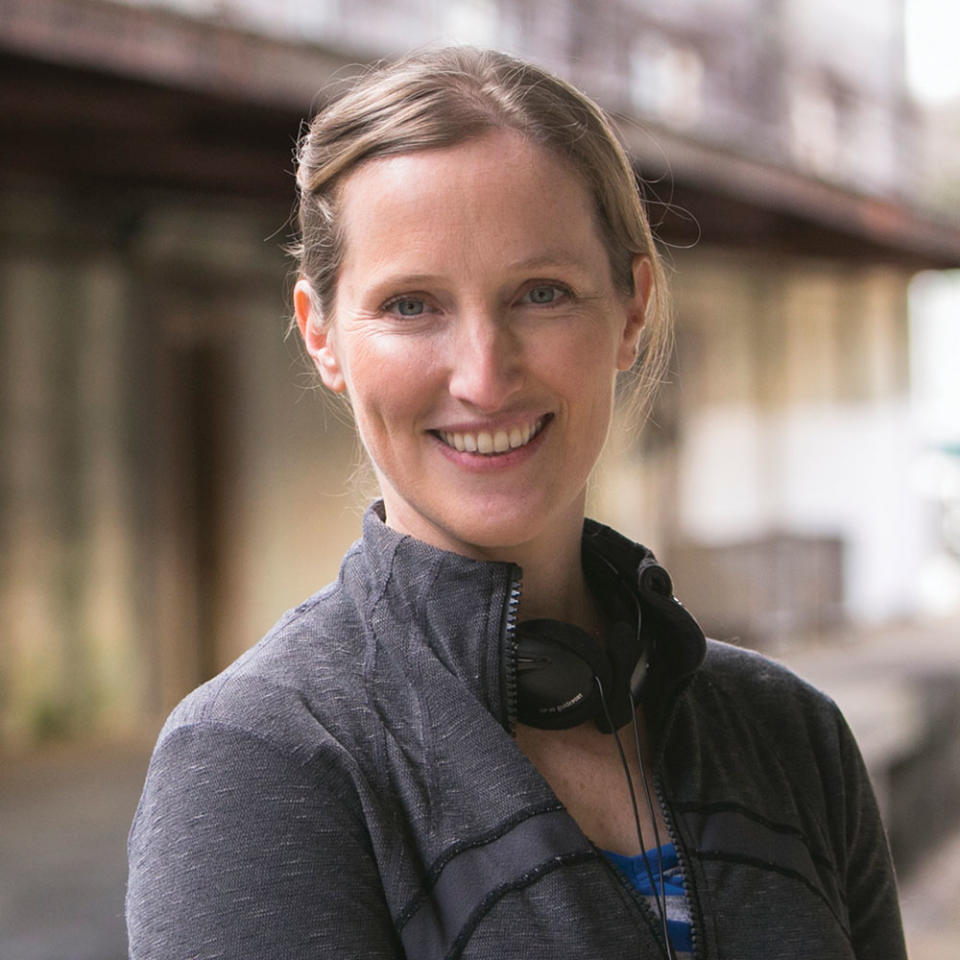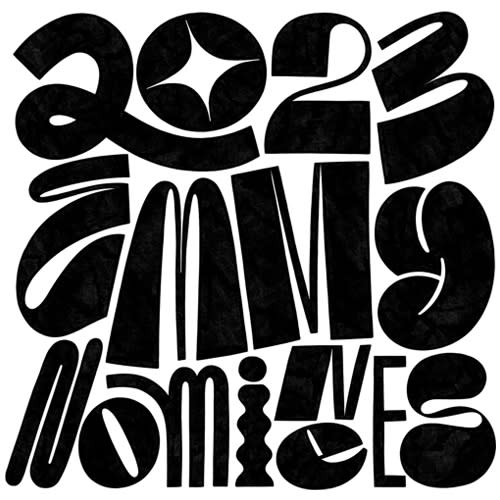‘Better Call Saul’ EP Says the Heart of the ‘Breaking Bad’ Prequel Is a Love Story
- Oops!Something went wrong.Please try again later.
- Oops!Something went wrong.Please try again later.
- Oops!Something went wrong.Please try again later.
- Oops!Something went wrong.Please try again later.
- Oops!Something went wrong.Please try again later.
- Oops!Something went wrong.Please try again later.
- Oops!Something went wrong.Please try again later.

Better Call Saul‘s final season marks the conclusion of executive producer Melissa Bernstein’s 15-year journey that began with Breaking Bad‘s pilot shoot in 2007. The celebrated AMC drama about the rise and fall of Walter White (Bryan Cranston) paved the way for the Jimmy McGill/Saul Goodman-led (Bob Odenkirk) prequel-sequel series Better Call Saul and the Jesse Pinkman (Aaron Paul)-centric sequel movie El Camino: A Breaking Bad Movie (2019).
Considering that Breaking Bad narrowly survived the 2007-08 WGA strike with perennial low ratings until a late series Netflix bump, Bernstein remains astonished that Vince Gilligan’s mayhem-filled show went on to spawn what could be the most well-crafted shared universe to date. “It just feels like lightning in a bottle that lasted a really long time,” says Bernstein. “We’ve all pinched ourselves into bruising.”
More from The Hollywood Reporter
Guest Essay: How 'George & Tammy' Captured My Parents as Human Beings First, Musical Icons Second
'Hocus Pocus 2' Delivered "Cosmic Costume Design" With Magical Flourishes
'Fire Island' Director Says Film Shoot "Was Like Gay Summer Camp"

Whether by Gilligan on Breaking Bad or Peter Gould on Better Call Saul, Bernstein has often been described as the de facto showrunner on set whenever either creator was unable to leave the writers room. She became their eyes and ears, and her on-set prowess even landed her in the director’s chair for two episodes on Better Call Saul‘s fifth and sixth seasons. However, she is quick to chalk up her success to Gilligan’s and Gould’s writing staff. “With a blueprint like theirs, it’s hard to lose,” says Bernstein.
Now a year removed from Better Call Saul‘s critically acclaimed series finale, “Saul Gone,” Bernstein is eager to celebrate the series’ last Emmy run, especially after the show nearly lost its leading man to a heart incident in the second half of the final season. In July 2021, Odenkirk collapsed on set and his heart stopped for 18 minutes until he was heroically revived by health and safety supervisor Rosa Estrada and first AD Angie Meyer. “There’s just nothing quite that profound that I’ve experienced,” she says.
Bernstein spoke to THR about creating a spinoff that is on par with its highly decorated predecessor.
You and your Breaking Bad collaborators set the bar very high for yourselves ahead of Better Call Saul. Are you shocked that there’s now legitimate debate as to which series is superior?
I love that. It’s the dream, really, and I’m thrilled by it. I think they are very distinct from one another, even though they mine some of the same territory. They were both made with a lot of detail and incredibly thoughtful craftsmanship. Some people like oranges and some people like apples. I’ve talked to people who couldn’t get past the body melting in the bathtub on Breaking Bad, but some of them fell in love with Jimmy and Kim, completely separated from Breaking Bad.
Between the pandemic and Bob Odenkirk’s cardiac incident in the middle of Better Call Saul‘s “Point and Shoot” episode, was season six the most challenging season of either show?
The challenges were just so unforeseen, and they were so high stakes. We were literally dealing with life and death, from not understanding COVID at the beginning of it and trying to keep everybody safe, to quite literally seeing Bob having departed. He was gone. There were moments where he was not with us, and there’s just nothing quite that profound that I’ve experienced.
But it’s part of what our business is. You problem-solve and you figure something out, and then you get a whole new problem that you couldn’t possibly have imagined. And so the final season definitely offered those up, but we were really well equipped to handle them because we had such a finely tuned machine and so much love and trust among colleagues and collaborators.
To a much lesser degree, you had the Saul Goodman office exterior only for a brief window in the early part of the season, and that happened to be the one time period in which Bryan Cranston and Aaron Paul could make their late-season returns. Did that schedule put you through your paces?
We were so lucky that Bryan and Aaron were willing to come back. They’ve always been our biggest cheerleaders, and those guys can just shift gears and become Walt and Jesse. Even getting their costume photos was déjà vu in the best possible way, and it was magic having them back together among so many of the same crew and castmembers that they already knew and loved. We had a limited window, and with Jesse involved in our exterior Saul office, we had to shoot their pieces out of order and very early in our season because that’s when they were available. So we were shooting scenes out of episodes that weren’t written yet, which isn’t how our show works. It’s very much a brick-by-brick writers room; it’s index card after index card. So we had to say to the writers, “All right, we can get them, but you need to finish these scenes months and months before you’ve finished breaking the final season of the show,” and that was counter to our whole approach to storytelling.
When did you first feel the show gravitating away from Jimmy and Chuck McGill’s (Michael McKean) fraternal feud and more toward Jimmy and Kim’s doomed love story?
I loved seeing the show as a love story because it felt so counterintuitive to Breaking Bad and the complex character of Saul Goodman. As soon as we met Kim, it just felt like this woman was going to be critically important. Rhea Seehorn’s portrayal of the character just immediately felt so lived-in and human, and we all fell in love with her. It was only a matter of time until we saw how that shook out. We know it took a very toxic turn, but it presented itself — at least to me — in the early days.
There was a common misconception that Better Call Saul characters had to die to explain their absence on Breaking Bad, and so many viewers expected Kim to be ill-fated. Were you ever truly worried about her?
It certainly wasn’t off the table, but it really would’ve surprised me. It just didn’t feel like the place where Peter and Vince would take that story, and it would’ve been too easy for the writers. So I never really thought that was the road that they were going to go down.
In Breaking Bad‘s “Granite State” episode, Saul Goodman urged Walter White to turn himself in and become the “John Dillinger” of the local prison. In a roundabout way, Jimmy took his own advice. Are you glad he was accountable?
Yes, it was really important because his humanity started to run so thin the further and further he got away from his true north, Kim. Maybe some portion of that was his brother, and his own skill as a lawyer. We all take a lot of self-worth from how we contribute, and as Jimmy got so far afield of his best self, that was the only way to redeem the character and to feel a sense of satisfaction with the journey and to feel like he deserved Kim, even if their relationship was no longer a romantic one.
There was internal back-and-forth about where to end the series finale, be it in the prison yard or in the interview room. Do you recall your vote?
I did argue for a shorter version of the exterior prison scene, and Peter did make trims, like the finger guns that Kim never gave. So I think that was definitely the right move. I love what Peter chose, and it really was about him finding the exact right spot to end. He allowed himself to feel his way through it in real time, which was actually pretty thrilling. But I think we could have ended it inside, too. I think Peter’s point of view is that it would’ve been a little bit too upbeat, and maybe I was desiring that in the way that I so love seeing the show as a love story.
You’re currently producing season two of the Game of Thrones prequel, House of the Dragon. What lesson from the Breaking Bad universe have you applied?
One of the most critical lessons is never forgetting the writers’ room philosophy of, “What’s going on in the character’s head?” and really thinking through moments, scenes, episodes and seasons with that in mind. Another thing I definitely learned from Vince on Breaking Bad is assessing how real humans behave, even if it’s a background artist. It’s trying to stay within normal human reactions and being rooted in those details. So, even if there are dragons, you have to look at stories that way. It keeps people tethered to the humanity and the emotional stakes of a story, no matter what world it is.
Interview edited for length and clarity.
This story first appeared in an August stand-alone issue of The Hollywood Reporter magazine. To receive the magazine, click here to subscribe.
Best of The Hollywood Reporter
From 'Fuller House' to 'And Just Like That': 30 Shows That Prove TV Reboot Culture Is Alive and Well
"This Was One Hot Mess": Lisa Vanderpump, Keke Palmer and the THR Reality Roundtable
Tom Holland Breaks Free: Talking Zendaya, ‘The Crowded Room’ and the Future of Spider-Man


